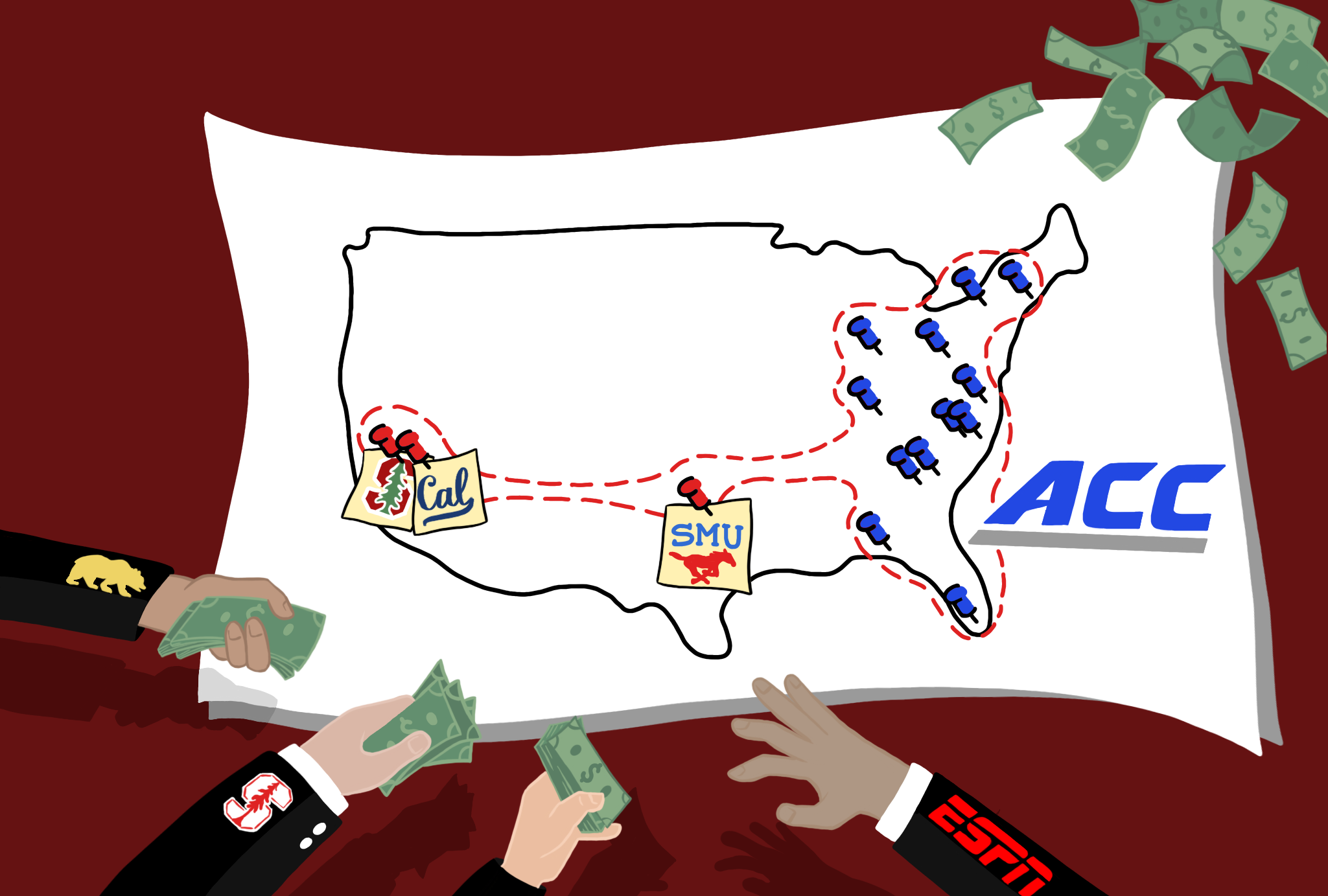In July, thousands of college sports fans tuned in to watch a Zoom meeting of the University of Colorado’s Board of Regents. These meetings are typically administrative affairs closed for public viewing, but this one in particular garnered a great deal of media attention.
The topic on the table was a potential change of Colorado’s athletic conference membership from the Pac-12 to the Big 12. Fans tuned into the meeting to witness a live redrawing of the map of college sports—redefining historical rivalries and changing regular opponents. School administrators, on the other hand, were primarily concerned with switching conferences to guarantee the financial future of the school’s athletic programs.
Conference membership is a key factor in determining the amount of money a university earns from athletics, in addition to determining a college team’s opponents. Ticket sales, alumni donations, and licensing fees all play a part in generating athletic revenues for a school, but for top Division I programs, the big money is in TV. Instead of negotiating contracts with individual schools, conferences are typically responsible for making contracts with TV networks, which can be worth billions of dollars. For example, over the next seven years, each university in the Big Ten will make about $72 million per year from an agreement to broadcast football and basketball on CBS, FOX, and NBC.
Schools in the SEC will make a similar amount of money from ABC and ESPN over the next ten years. Big 12 members will each make $31 million over the next six years, a figure that is significantly lower than the Big Ten and the SEC, but still represents the third most valuable TV contract in collegiate sports.
All these contracts are set to go into effect within the next couple of years, so if a university is looking to make more money and its current conference can’t offer a sufficient amount of cash, right now is the perfect time to jump ship to a new conference that can offer more money. This exact scenario led to the demise of the Pac-12, which saw a mass exodus of its members, including Colorado, this summer after it failed to offer a contract with a value comparable to its rivals.
The BIG EAST, Georgetown’s conference, recently announced that it is also renegotiating its TV deal, but no team has left or joined the conference since 2013, save for UConn’s rejoining in 2020. It’s quite the demonstration of stability for the Hoyas’ conference, especially considering its formation was a major pillar in the realignment chaos of a decade ago.
Finishing off the list of major conferences is the ACC, which locked its members into a 20-year TV contract nearly a decade ago. This is preventing valuable programs like Clemson and Florida State from jumping ship this time around and means that incoming ACC members Cal and Stanford will not get an equal share of current TV revenues thanks to preallocated revenue from the contract’s signing. New member Southern Methodist University, in fact, will receive no share of the current revenue, instead hoping that the publicity of being a member in a prestigious “power conference” will pay off in the long term.
Those with a bit of geography knowledge immediately notice a problem: two schools located in the Bay Area plus a school in Dallas are joining the Atlantic Coast Conference. Coaches and journalists alike have already raised concerns about how membership in a country-spanning “superconference” will affect student athletes who will have to travel cross-country multiple times a year, all while managing a college workload.
Meanwhile, university administrators, TV executives, and the NCAA are continuing to look toward the future status quo of college sports, and only one thing is certain: colleges will continue to do everything in their power to make more money.
The most likely future outcome is the consolidation of the country’s top college sports brands into one or two major conferences. This trend has already begun, with Oklahoma and Texas moving to the SEC from the Big 12, and Oregon, Washington, UCLA, and USC migrating to the Big Ten from the Pac-12 next year, drastically weakening the power of the other major conferences. By the mid-2030s, when the next round of TV contracts expire, it’s possible that the most valuable schools—the universities with the largest fan bases, highest game attendance, and the best on-field performance—will abandon the less valuable schools entirely and create a “super league” of college sports, with every single matchup guaranteed to be a big moneymaker for the TV networks and universities.
A system of promotion and relegation in a structure similar to soccer leagues around the world is another possible outcome, forcing college teams to win their way into the top league and earn the money that comes along with it. Alas, this is America, and no college already at the top of the athletic ladder would support a system that only serves to potentially lose them money in the future if their team does not perform at a high level.
Perhaps the most interesting and optimal possibility, however, is the hypothetical creation of country-spanning conferences dedicated to only football and basketball, separate from the “non-revenue sports”—sports that don’t make immediate money for the university. Accommodating both athletic profits and success for student athletes, colleges can still reap the monetary benefits of football and basketball while lessening the travel burden on student athletes.
The current wave of conference realignment has given us a glimpse of what the future of college sports may look like, but in the meantime, student athletes and fans alike are stuck with multiple leagues spanning the country, organized in a clearly inefficient manner, with historic rivalries and tradition abandoned in the face of millions of dollars worth of media revenue. It may seem like whoever designed the modern map of college sports is crazy, but it’s just capitalism. The only certainty right now is that schools will continue to switch conferences, leaving us all wondering—who’s next?





